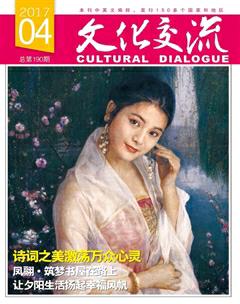木板刻出的藝術
王依虹
過完了農歷新年,不少人表示,熱鬧是表象,內里似乎還缺了點什么意蘊——至少在城市里如此。于是,有人說,你的年味只差一紙年畫。細想想,也許有一定道理。
中國農歷,本就是反映農時之歷,如今農業社會的方方面面早已漸行漸遠,與之相適應的根基在深刻變化,文化的內容也自然在淡化。
以前過年,家家戶戶都更換年畫、春聯,現在張掛者已經不多,有青少年甚至不知道年畫為何物。為展示年畫的獨特藝術和作用、價值,即對中國傳統節慶文化的積極傳承,農歷丁酉新年(2017),紹興蘭亭書法博物館與杭州西湖博物館聯合舉辦了中國木板年畫精品展。
大都用于新年的年畫,起源于漢代,為中國民間藝術之一,是農村老百姓喜聞樂見的藝術形式。
兩宋時期,汴京(今河南開封)和臨安(今浙江杭州)的歲末,年畫市場火熱,孟元老《東京夢華錄》和周密《武林舊事》分別記載了當時的景況。
中原的開封朱仙鎮年畫被視為中國年畫發展的“鼻祖”,內容多反映中原傳統民俗文化,藝術上體現了京都文化與市井文化并存的較精細的主流風格與粗獷甚至比較粗糙的傳統風格。后者的鄉土味道影響了整個北方年畫。
天津楊柳青年畫是北方年畫的代表,崛起于明代,鼎盛于清代。楊柳青年畫題材廣泛,包括傳統的“仕女”“諸神”等,其中“娃娃”是“形象擔當”;采用木版套印和手工彩繪結合的特色手法,刻工精美、繪制細膩、色彩絢麗。“楊柳青青似畫中,家家繡女竟衣紅。丹青百幅千般景,都在新年壁上逢。”它被公推為中國年畫之首。
在江南,以杭州為中心的年畫,融會了吳越文化的精秀細巧,直接傳播至蘇州、無錫等地區。明清時期,蘇州桃花塢一帶是江南年畫中心。它的一大特點是,以故事性內容為主,出現了描繪景物和現實生活的作品。借鑒了明成化皇帝所創的《一團和氣圖》的“一團和氣”,是桃花塢年畫中最具特色的代表作之一,此外還有許多宏構巨作的立幅。它與楊柳青年畫有明顯不同的風格和技巧,人稱“南桃北楊”。
濰坊楊家埠年畫屬于北方年畫系列,興起于明代,晚清興極一時,當時有“畫店百家,年畫千種,畫版數萬”之說。楊家埠年畫以農村炕頭畫為代表,內容豐富,“巧畫士農工商,妙繪財神菩薩,盡收天下大事,兼圖里巷所聞,不分南北風情,也畫古今逸事”,藝術上頗具特色:線條粗放,造型簡括,色彩強烈。
西南地區的綿竹年畫從宋代起流行,其品種以門神、門童形式最富有變化。它在制作上以畫工勾染為主,即只用墨線印出畫樣后,即以手工描繪,這與其他各地年畫都用色版套印完全不同。綿竹年畫還用捺印法,即在添補金色團花時,將花樣刻成圖章型,捺印在畫面上。
農歷新年是中國最盛大的節慶,從文化的角度看,年畫在中華文化圈的流播影響,最為廣泛、最為深遠,遠涉日本、朝鮮、越南、緬甸以及印度等國。除上述五大“中國民間木板年畫中心”外,陜西鳳翔、福建泉州、廣東佛山以及浙江、安徽、湖南、貴州均有年畫產地。這次在紹興蘭亭書法博物館舉辦的年畫展,集合了全國不同地域、不同風格的年畫共一百幅,讓人們感受歷史曾經有過的輝煌燦爛。
年畫作為人們過年的必備品,不僅是一種喜慶的五彩繽紛的點綴,而且體現了實用性——文化流通、道德教育、審美傳播、信仰承續的作用。
年畫從“形”到“意”價值不菲。首先,傳達了相當的審美情趣。年畫構圖飽滿,嚴密均勻,留白處少;圖像大都顯得夸張,滿足了喜慶效果;用色以紅、青、黃、白、黑五大“正色”為主,大膽厚重,對比強烈。這些都是人們對于美好事物的憧憬。
其次,具備有很大的教育價值。吉祥是中國人過年的永恒概念,歷史故事、戲曲故事、民間故事都是年畫常見的題材。年畫銷量大、受眾廣,這些故事能夠得以廣泛的傳播,從中學習道德觀念、歷史人文、風俗人情等,起到普及和教育的作用。年畫用畫面講述,更為直接明了,讓人更容易接受。
再者,承載著一定的文獻資料意義。年畫內容涉及歷史、宗教、神話、戲曲和自然地理、生活習俗等,具有準確的地域性和時代性,記錄了各種人文信息:真實的心理寫照和情感向往,可以作歷史的參證。
傳統的年畫的制作包括手工繪制、雕版、套色水印。因歷史的原因,從上世紀三四十年代起,年畫市場已經逐漸退化、甚至沒落,有著傳統技藝的匠人在慢慢消逝。現在,部分留存品體現著它的經濟價值。作為最有地方特色,直接、生動地反映民俗文化的藝術品,年畫可以作為禮品、藏品。
一個多月的展出時間,中國木板年畫精品展近日落下帷幕。我們在感嘆中國傳統民間文化流失的同時,希冀年畫在“沒落”中“重生”。紹興蘭亭書法博物館把年畫制作工具帶進展覽中,讓參觀者親手制作,體驗年畫的生產過程;為小參觀者準備了DIY填色,發揮自己的各種想象,用蠟筆、彩色筆為年畫配色;年畫拼圖讓參觀者們在玩樂中記住不同地域的年畫。通過賞年畫、做年畫,重新體驗年畫的審美情趣、教育價值、文獻資料意義,讓年畫“重生”。
近年,具有濃郁鄉土氣息與地方特色的各地年畫的制作技藝,先后被列入世界、國家、省、市非物質文化遺產代表名錄。形式的保留,也就有了內容和情感的存續。中國木板年畫精品展既是年畫藝術的一次集中大展示,又是對中國傳統民間文化的積極傳承,也為到來的農歷丁酉年增加了“年味兒”。
New Year Pictures used to be a must for celebrating the Spring Festival, the traditional Chinese New Year according to the lunar calendar which has been in use for more than two thousand years. Nowadays some people wonder why the Spring Festival festivities are no longer as colorful as they were in the past, one possible answer could be: New Year pictures are no longer a universal sign of the festival across the country. They used to be. Nowadays, one can only find the best specimens of the New Year Painting in books, museums or exhibitions. Some youngsters even have no idea what New Year pictures are.
During the Spring Festival celebrations in 2017, a New Year Painting exhibition was jointly held in Orchid Pavilion, Shaoxing by West Lake Museum of Hangzhou and Shaoxing Orchid Pavilion Museum of Calligraphy.
New Year Painting is a folk art genre that originated in the Han Dynasty (202BC-220AD). Its popularity lasted for about 2,000 years. Over the past centuries, the Chinese New Year Painting spread to Japan, Korea, Vietnam, Myanmar and India.
In history, China had five major producers of New Year pictures. The New Year pictures created in Zhuxianzhen, Henan Province are widely considered the prototype of the genre. They reflect the northern lifestyle. The New Year pictures made in Yangliuqing in Tianjin became influential in the Ming Dynasty (1368-1644) and reached a climax in the Qing (1644-1911). They are considered the greatest. Hangzhou used to be a center of New Year Painting production in Jiangnan, the south of the Yangtze River Delta. The style featured elegance and sophistication. In the Southern Song Dynasty seated in Hangzhou, the New Year pictures flourished in Hangzhou. Folk artists in Wuxi and Suzhou picked up the style and improved it. In the Ming and the Qing, Suzhou in present-day Jiangsu Province was the center of making New Year paintings. These artworks were all branded as production of Taohuawu (Peach Blossom Valley). The paintings largely tell stories and legends. If placed side by side, Yangliuqing and Taohuawu feature obviously different styles.
Yangjiabu in Weifang, Shandong thrived as a major production center of New Year paintings in the last decades of the Qing. History says that there were over 100 studios in town that printed more than 1,000 titles. Tens of thousands of woodblocks were used.
In Sichuan, a southwestern province, Mianzhu used to be a big producer of New Year pictures. The best known images are gate-guarding gods and door children. The pictures were all painted in black lines and then manually colored.
There were also other regional production centers across China, such as Shaanxi, Fujian, Guangdong, Zhejiang, Anhui, Hunan and Guizhou provinces.
One hundred exhibits presented different styles and techniques and a wide range of themes. They used to add a lot of cultural elements and sentiments to the celebration of the Spring Festival. These pictures are artistic presentations of morality, culture, aesthetics, faith, etc. Most pictures carry full images in bright five colors: red, blue, yellow, white and black. These pictures reproduce the representative scenes of legends and myths, folktales, opera plays. These pictures can be considered as mini lectures on history, culture, lifestyle, viewpoints, and morality.
The Chinese New Year pictures declined in the 20th century, as modern arts influenced peoples aesthetics. A small number of studios across the country still make some pictures. But in the general, the glory and dream of the New Year pictures are long gone. Some private collectors and museums still hold some best specimens of the once most popular folk art.
What made the exhibition in Shaoxing special was that visitors to the exhibition could try their hands at making a New Year picture. Children were encouraged to add colors to the uncolored pictures in the making.

